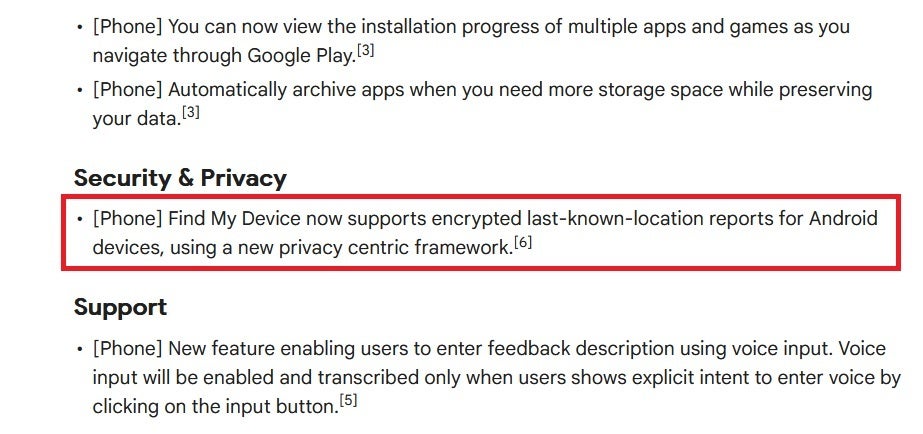In June 2021, a report said that Google was looking to raise the capabilities of its Find My Device feature bringing it to the same level as Apple's Find My network. The latter can track lost or stolen iPhone units, iPad tablets, Macs, and AirTag trackers even if they are out of Wi-Fi and Bluetooth range. Heck, the Find My network will find these devices even if they are turned off!
Soon, Android devices worldwide might form a network to help find lost or stolen Android or Wear OS devices
Google's Find My Device only tracks phones that have been signed in to your Google account. The platform also can't help others find their lost or stolen devices. However, Google's work to expand the capabilities of its Find My Device feature continues. Google's release notes for the December 2022 Play Store update (via Android Police) include the following mention: "Find My Device now supports encrypted last-known-location reports for Android devices, using a new privacy-centric framework."
Google's support page reveals that the Find My Device feature could soon be upgraded
This could indicate that Google is working to allow Find My Device to track Android devices that have been lost or stolen even sans an internet connection. With an updated Find My Device network, the location services from other Android devices could help find other Android users' missing handsets. Since the information would be encrypted, only the owner of the "discovered" device would know where it is located. This network could also be used to help find missing or purloined Wear OS devices.
With over 3 billion Android devices floating around worldwide, a Find My Device network could cover plenty of ground. If this sounds familiar, this is how Apple's Find My network works, Apple itself says, "The Find My network is an encrypted anonymous network of hundreds of millions of Apple devices that can help you locate your device or item." It's Apple's large number of active devices and the encryption that makes the Find My network work.
There has been no official announcement about upgrading Find My Device and we have no idea when the feature will be launched. This would be a big deal for Android users and should merit some type of announcement from the company.
App Archiving will now automatically archive certain apps when an Android phone's storage is low
The December Play Store update also adds support allowing Android users in some states to put a digital copy of their drivers' licenses in their Google Wallets. Additionally, in late November Google started rolling out app archiving for Android phones. This feature allows users to uninstall an app to free up space on their phones but still allows the app data to be stored on these devices. As a result, when the app is reinstalled, users will have the same exact experience with it that they had before uninstalling it.
And this month's update takes that feature and runs with it. Now, if a phone has a low amount of storage space, it automatically will archive certain apps. This is good news for those with budget Android handsets sporting a limited amount of native storage. This feature appears on v33.5 of the Google Play Store which was pushed out this past Monday.
To see which version of Google's Android app storefront your phone is running, open up the Play Store app and tap on the profile picture on the right side of the search bar at the top of the screen. From the menu you are taken to, press Settings > About and you'll see the Play Store version near the bottom of the screen. You'll also see a green link that says "Update Play Store." Tap on it and the Play Store will be updated, or you'll see a message that says your phone already has the latest version of the software.

Comments
Post a Comment